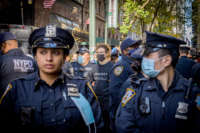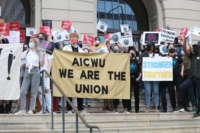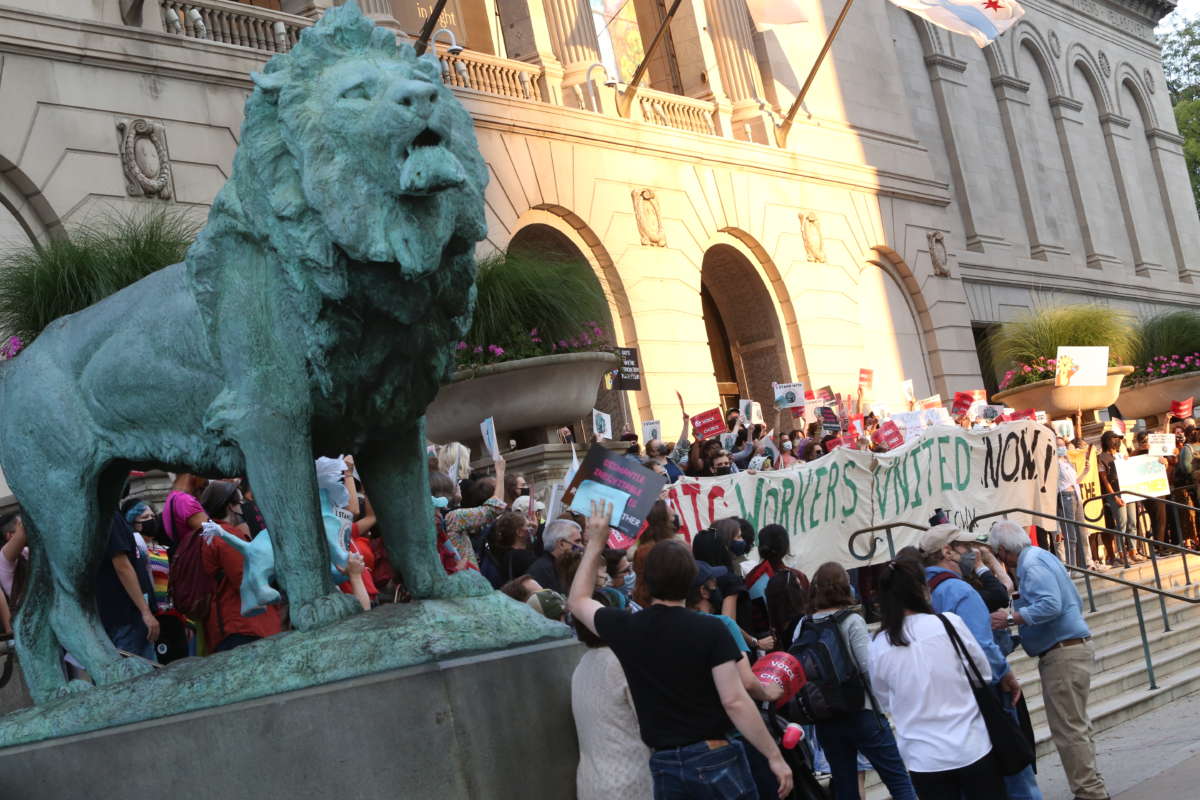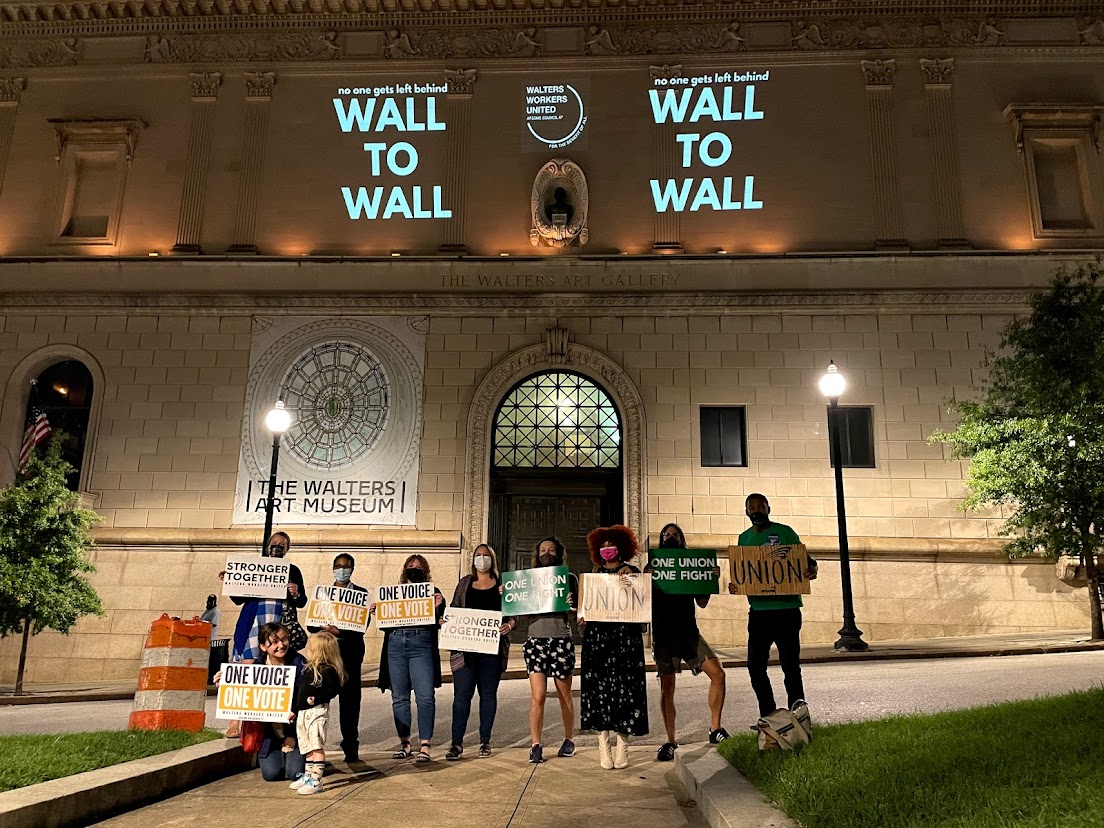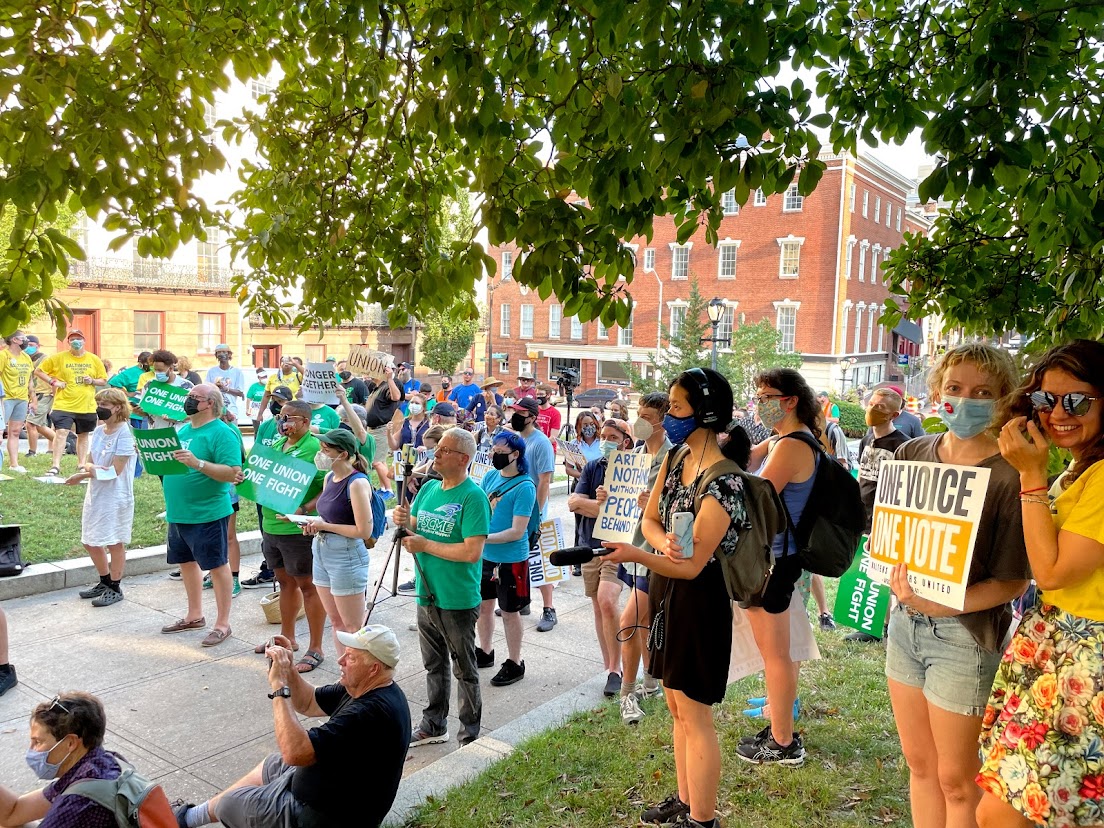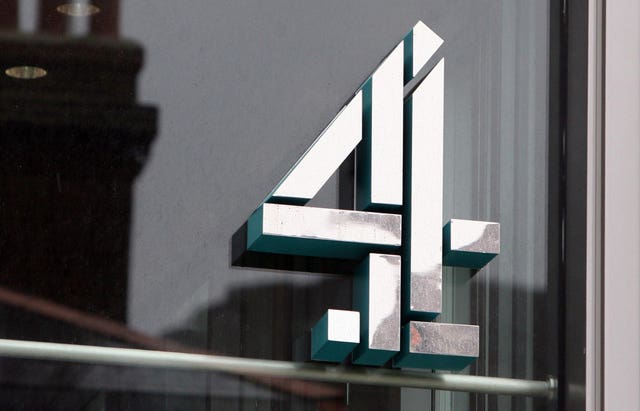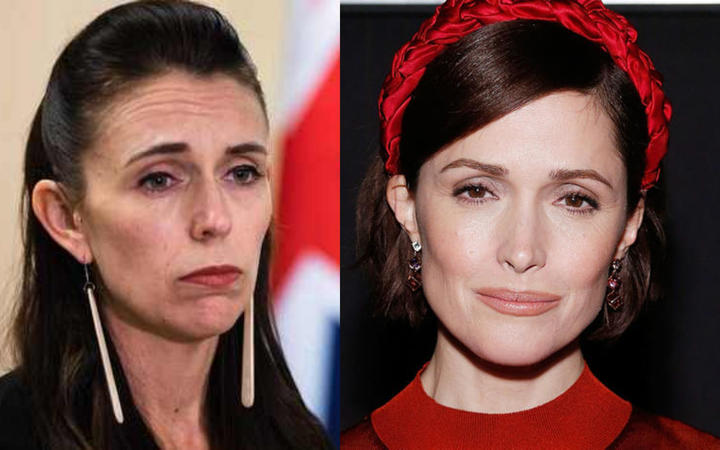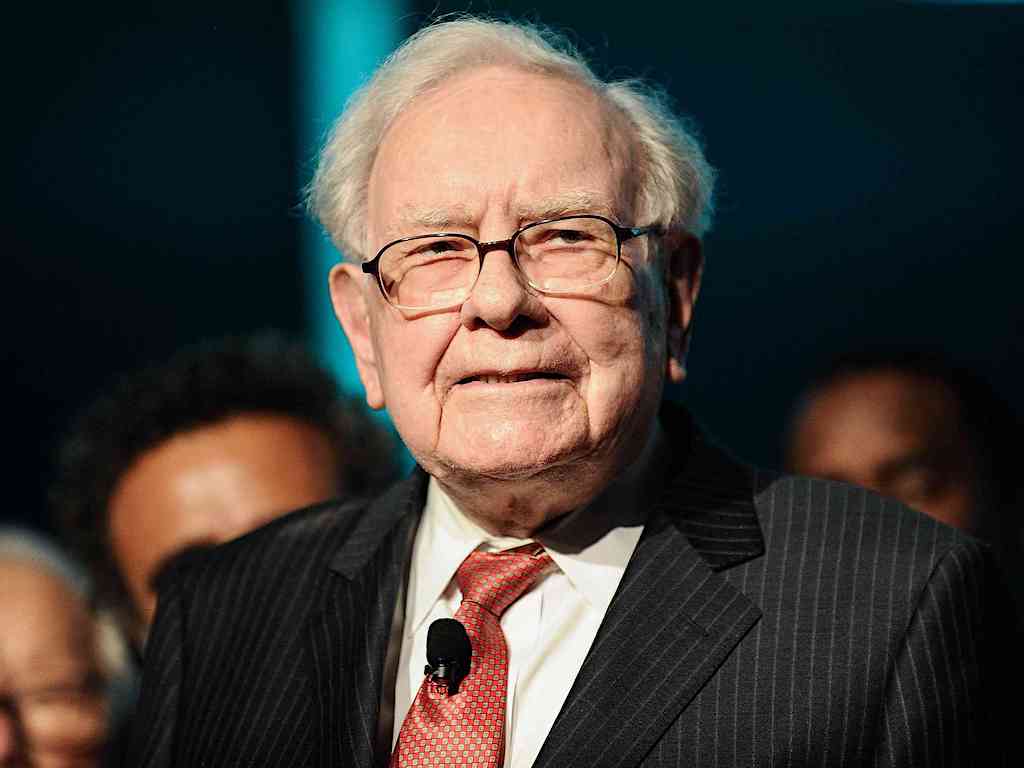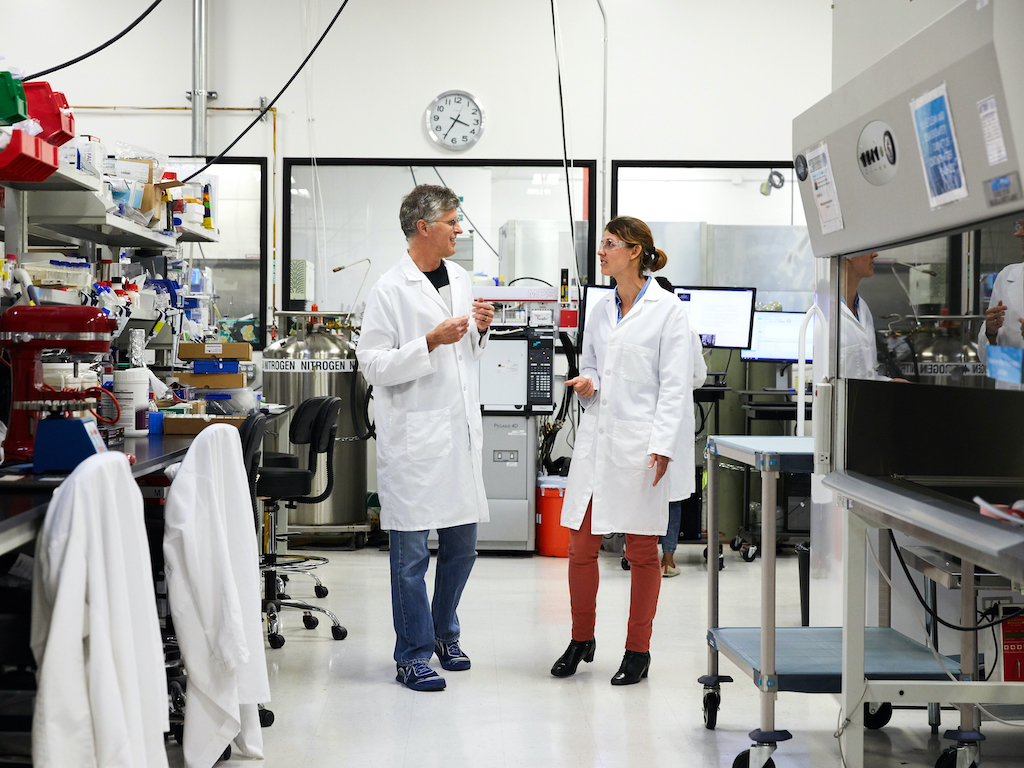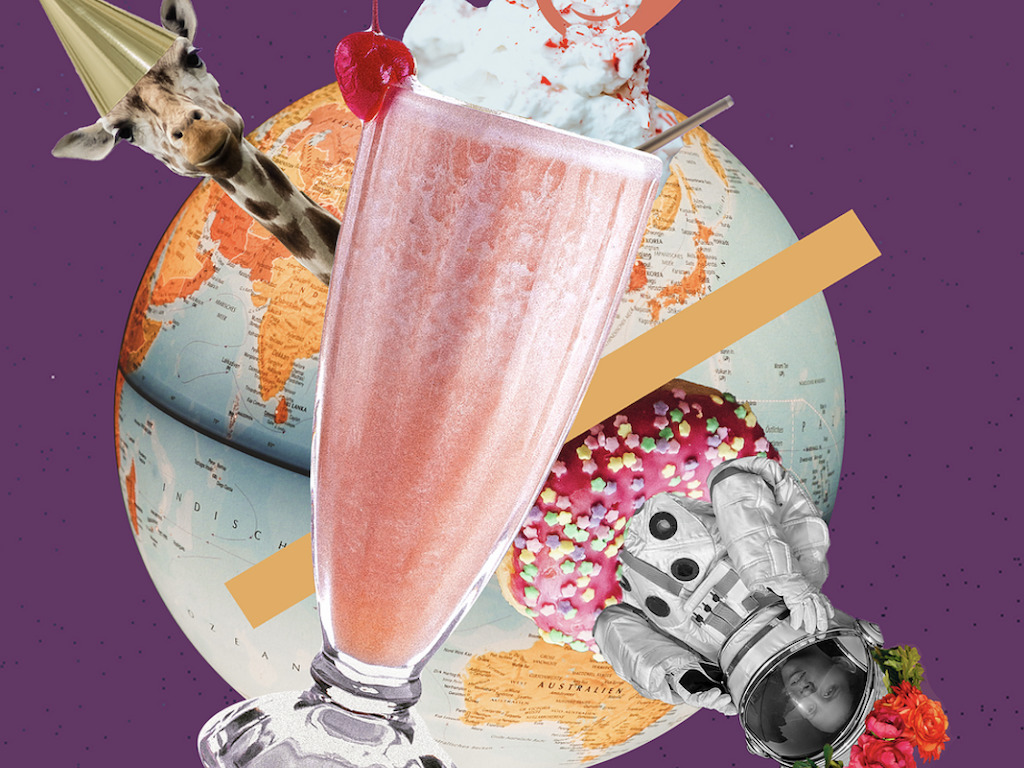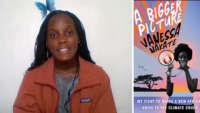
We go to Kampala, Uganda, to speak to climate activist Vanessa Nakate on the occasion of her first book being published, A Bigger Picture: My Fight to Bring a New African Voice to the Climate Crisis. In an extended interview, she describes the challenges of being a young Ugandan woman from a continent that contributes less than 4% of the world’s carbon emissions yet suffers the worst consequences of the climate crisis and is often ignored by the Global North. “There won’t be climate justice if specific groups of people are being left behind,” says Nakate, founder of the Africa-based Rise Up Movement. “We are facing the same storm, but we are definitely in different boats.”
TRANSCRIPT
This is a rush transcript. Copy may not be in its final form.
AMY GOODMAN: This is Democracy Now!, democracynow.org, The War and Peace Report. I’m Amy Goodman.
As we look at the impacts of the climate crisis in the U.S., we now turn to the continent of Africa, a region whose 1.3 billion people are responsible for less than 4% of the world’s carbon dioxide emissions, yet Africa has already been battered by some of the most dire consequences of climate change, through no fault of its own — rising sea levels, deadly drought, hotter temperatures, water shortages and food insecurity. Recently a locust plague hit portions of East Africa.
In October, the World Meteorological Organization warned the effects of the climate crisis in Africa will likely worsen if immediate action isn’t taken. Last year, the continent’s land mass and waters warmed more rapidly than the world average. This is the WMO’s Filipe Lucio.
FILIPE LUCIO: That there was an increase in food-insecure and undernourished people by 45.6%. And the predictions we have, the decade of predictions we have for the period 2020 to 2024, they’re indicating an increasing in terms of warming. With increased warming, we expect a reduction in terms of food production. … We also expect impacts in terms of disease and pests. But importantly, we will have impacts generated by flooding on the infrastructure system for agriculture production, which is the main source of livelihoods and food security in the continent. So, all indicates that the continuing warming would probably worsen the current 45.6% increase in terms of undernourished people we’ve seen from 2012.
AMY GOODMAN: The average greenhouse gas emissions generated by a person in Africa are just a fraction of those living in countries like the U.S., Australia and U.K. Although richer nations are the world’s biggest polluters, the African Development Bank estimates Africa bears almost half the costs of adapting to the consequences of the climate crisis. Meanwhile, richer nations have failed to fulfill a pledge to grant developing countries $100 billion in annual funding to cope with the impacts of the climate catastrophe.
This all comes as climate justice advocates from Africa and other communities in the Global South have denounced the recent U.N. climate summit, COP26 in Glasgow, as a failure. Next year’s climate summit is set to take place in Sharm el-Sheikh, Egypt, and advocates hope it will draw more attention to a region that’s been long overlooked in conversations about the climate.
One of Africa’s loudest voices in the fight against the climate crisis is Vanessa Nakate. Earlier this year, she was on the cover of Time magazine. Now the Ugandan climate justice advocate and founder of the Rise Up Movement just released a new book. It’s called A Bigger Picture: My Fight to Bring a New African Voice to the Climate Crisis. Part manifesto, part memoir, the book presents a new vision for the global climate justice movement that builds a livable future for all and is inclusive of all. Vanessa Nakate now joins us from Uganda’s capital, Kampala.
Welcome back to Democracy Now! It’s great to have you with us, Vanessa. We played your speech when you were in Milan, leading up to the U.N. climate summit. That title of your book, A Bigger Picture, refer to the picture that first motivated you to really fight against the climate crisis and represent the continent of Africa.
VANESSA NAKATE: Well, thank you so much. I’m happy to be here.
First of all, I want to say that I do not represent the African continent. I am one of the activists who are speaking up and organizing and mobilizing from the African continent. So, it isn’t just one voice. And I feel like when we put a face on, you know, our climate movement, or faces on the climate movement, it is very problematic in that it ends up erasing the voices of the rest of the activists who are speaking up. For example, I may have a clue about what is happening in Kenya or in South Africa, but an activist from those countries, you know, they understand, or they have a bigger picture of what they’re experiencing. So, I just wanted to first make that very clear.
And then, in A Bigger Picture, I really talk about many things that people need to see, beyond what society has showed us, from the climate crisis to climate justice. Many times climate change just ends in being statistics for people, but the climate crisis is more than statistics. It’s more than data points. You know, it’s more than net zero targets. It’s about the people and how the livelihoods of people are being impacted right now. It’s about the intersections of the climate crisis with other issues that pertain to our living, to our survival, be it education or poverty eradication or achieving gender equality or having peace in our communities. All these are connected to the climate crisis. It’s like we are in one system, and it’s an interconnected system. And if one part of the system crashes, then the entire system crashes. If it’s a puzzle, if one piece of the puzzle is missing, then the puzzle can never be complete.
So, in A Bigger Picture, I really explain what the climate crisis really means, beyond statistics, and how it impacts the lives of the people, especially the people on the frontlines of the climate crisis. And it also tells the stories of a number of different activists, especially from the African continent, because every activist has a story to tell, and every story has a solution to give, and every solution has a life to change. So I think it’s really important to have many voices listened to, platformed and amplified, if we are to have climate justice.
AMY GOODMAN: Vanessa Nakate, you spoke out against racism in the media after you were cropped out of a photo featuring yourself and other prominent climate activists in Davos, Switzerland, last year. The other youth activists were white. They included Greta Thunberg. The Associated Press, which published the cropped photo, said the photographer cut you out of it because he thought the building behind you was distracting. At the time, you said the move, quote, “erased a continent.” I wanted to go to you speaking in a video you posted on social media at the time.
VANESSA NAKATE: This is the first time in my life that I understood the definition of the word “racism.” … Africa is the least emitter of carbons, but we are the most affected by the climate crisis. But you erasing our voices won’t change anything.
AMY GOODMAN: Can you talk more about that photo and what it represented to you, but then how it propelled you even further in your activism, how you became a climate activist in Uganda, and now a global one, of course?
VANESSA NAKATE: Well, what I can say is that, you know, the thought of a building being behind me and not being a perfect, probably, composition for the whole picture in the end, that is something that ends up erasing someone’s story or someone’s experience or someone’s solutions and what they’re doing in their communities.
I come from a country that is one of the least emitters of CO2 emissions and a continent that is historically responsible for only 3% of global emissions, and yet many people are already suffering some of the worst impacts of the climate crisis. So this is the horrible reality of the climate crisis, that those on the frontlines of this crisis are not responsible for the rise in the global temperatures.
And the other horrible reality of the climate crisis is that while communities in Africa or in the Global South are on the frontlines of the climate crisis, they are not on the front pages of the world’s newspapers. Many activists find themselves struggling to be platformed or to be listened to. Many of us have been called missing voices, yet we are not missing. We are just unheard. So, these are some of the horrible realities of the climate crisis that are experienced by not only the people on the frontlines but also the activists who are speaking out from the frontlines.
And what I can say is that we cannot have climate justice if the voices from the most affected communities are continuously being cropped out or continuously being left out of conversations or are not being amplified or are continuously being called missing. I experienced the same thing while at the conference in Glasgow, you know, continuously seeing myself being erased from pictures or from being named and all that. So, this is an experience that doesn’t just erase my story or my experience; it’s an experience that just literally erases the existence of the challenges that I’m seeing in my country and the problems that people are facing because of the climate crisis.
And what I can say is that many activists from Africa, from the Global South, they are facing challenges in having their voices heard and listened to and platformed and amplified. And this is a challenge for climate justice. Again, there won’t be climate justice if specific groups of people are being left behind. We are facing the same storm, but we are definitely in different boats. As many boats are still strong and can continue to sail, other boats are already sinking. Other boats are already on fire. So it is time to pay attention to voices, to people, to activists, to communities that are on the frontlines of the climate crisis.
AMY GOODMAN: Vanessa —
VANESSA NAKATE: And when we —
AMY GOODMAN: Vanessa Nakate is speaking to us from Kampala, Uganda. For not only young activists, but for all activists, first-time activists, can you tell the story of what motivated you to move forward — it took a lot of courage — and what these first climate strikes were about, you and a small group of friends, like your friend Elton John, an Ugandan climate activist like yourself, and what you faced at the beginning, even worried about your family’s reaction, though they ultimately deeply supported you?
VANESSA NAKATE: Well, I remember my very climate strike. I had my siblings and my cousins join me. And, of course, it took me a while to do the very first climate strike, as I was scared to go out and just face the public or face the people, and, of course, fears of what my friends, that I had been at school with, would say. So, these are some of the challenges that I saw and experienced before starting activism.
But when I started activism, I can say that more challenges came in with the reactions of people, you know, with the fear of how my family would react. But I thank God that my family has been very supportive. From when I started activism, my parents have been very supportive. They didn’t really understand what a climate strike really meant. Many people didn’t understand what a climate strike really meant. But they understood that I was advocating for environmental protection. So, they — I don’t remember any point where my parents said, “No, you shouldn’t do this.” So, I’m thankful that they were supportive and also the rest of my family was supportive.
But what I can say is that in those following weeks, in those following months, the main challenges that I saw there were reactions or comments from people, especially on social media, people saying some of the most terrible things on my tweets or on my posts. And I remember some of those things were people saying that I was taking weed and that’s what was taking me to the streets, and some that I was going to the streets because I was looking for a husband so I wanted to be noticed while on the streets, and many more things that came in as I continued activism.
But what I can say is that a lot of, you know, hope that really came in that time, as a time when I felt like I didn’t have the strength to do activism anymore. And I remember this period of time I was just feeling frustrated about how we continued to strike every Friday, and leaders continued not to do anything, and the climate disasters continued to happen, and people continued to suffer. So, it was more of a place and moment of depression and feeling like I didn’t have the strength to go out and do the strikes anymore. But I remember after speaking to my friend and fellow activist, Davis from Uganda, I started to strike again, feeling more hopeful about the future, and also feeling more hopeful with the activists that were organizing. It’s always good to know that you are not doing activism just by yourself, but you’re speaking up and mobilizing and organizing with millions of people from different parts of the world. And that is something that can surely give you hope, to know that I can keep striking, knowing that I’m not alone, and to also know that when I need to rest, if I can — you know, if I don’t have the strength to strike this Friday, someone else in another place, in another country, is striking. So I think that is one of the beautiful things about realizing that this is global climate movement.
AMY GOODMAN: Vanessa Nakate, you retweeted Greenpeace, saying, “We cannot adapt to starvation. We cannot adapt to extinction, we cannot adapt to lost cultures, lost traditions, lost histories, and the climate crisis is taking all of these things away.” You subscribe to the principle “polluters pay.” Can you name the companies, the industries that you feel should be paying up or shutting down?
VANESSA NAKATE: We know that the Global North countries are responsible for the climate crisis and for the rise in global emissions, so we know who is responsible for the climate crisis. And we know who is not responsible and who is suffering the most right now. That is why in some of the things that I talk about it is loss and damage and a separate fund for loss and damage.
Developing countries are facing a lot of pressure to transition to renewable energy, to transition to sustainability. And, you know, you find that this pressure is coming from the Global North countries telling the developing countries, “You have to do this. You have to do this for the sake of the climate.” And, of course, even us as activists, we face these challenges, maybe when we are advocating for an end of [inaudible] in a country like mine or in any other country. So there is always these challenges of people saying, “But you seem to be an enemy of economic progress,” because this pipeline or this coal power plant is going to pull people out of poverty.
So there is a lot of pressure on developing countries to move to sustainability, first of all. And this is why there is a huge responsibility on the Global North to provide climate finance, climate finance that will enable developing countries to easily transition to renewable energy, to easily transition to sustainable cities or sustainable communities and countries, without burying their people into extreme poverty, because, again, if we are to have climate justice, climate justice should not leave people in extreme poverty. Climate justice should not mean that people are going to continue to suffer and suffer. That’s why if we are to look at climate justice, it has to go beyond — you know, it has to go beyond manufacturing of electric vehicles. It has to go beyond manufacturing of solar panels. It has to be about the people. We have to think about the solutions that are coming in — you know, that are being implemented in communities, that if this solution is being implemented, is it going to exacerbate inequalities, or is it going to increase poverty, or is it going to increase the suffering of the people? So climate justice has to have the heart of the people and the planet at the center of all these decisions.
So, what I’m trying to say is that we need Global North countries to act responsible and provide climate finance in form of grants, and not loans, for developing countries, because developing countries need to easily transition to renewables. They need to easily transition to more greener economies. And this can only be possible if there is a provision of climate finance. But we have seen — we have seen the promised $100 billion for developing countries, it has been delayed, I think, to 2022. And then we saw at the climate conference, no separate fund was put in place for loss and damage, yet very many vulnerable countries are already experiencing loss and damage right now. So, the climate crisis is taking away people’s cultures or lands or traditions. So these are things — we cannot adapt to the loss of these things. The climate crisis is pushing many communities to a point of not being able to adapt. So, yes, we want the climate finance for adaptation and mitigation, but we also want a separate fund for loss and damage, because loss and damage is here right now, because loss and damage is already affecting millions of people in different parts of the world.
AMY GOODMAN: Vanessa, you, in your book, write about a 9-year-old girl, not in Africa but in London, Ella Adoo-Kissi-Debrah, who died of a fatal asthma attack. And you write, “I learned about Ella’s story in December 2020. That’s when the international media reported that a UK court had, for the first time in British history, allowed air pollution to be recorded as the cause of someone’s death.” Can you talk about the significance of this, and how it relates to your activism on the continent?
VANESSA NAKATE: Well, if I’m to talk about this, the case of Ella, you know, it talks about, again, some of the horrible realities of this climate crisis. And, you know, with the continued burning of fossil fuels, we are seeing more air pollution or water pollution. And we see that the communities or the people that are in these residences, residences that are prone to air pollution or residences that are prone to water pollution, those are communities of Black people, communities of Brown people, you know, communities of people of color. They are the ones exposed, you know, in areas that are filled with air pollution or incinerators or landfills. So I think that this is one of the conversations about the environmental injustices when it comes to the climate issues.
The climate crisis does not affect all of us equally. Like I said, we may be facing the same storm, but we are in different boats, so the climate crisis does not affect us equally. So, if we are seeing increasing levels of air pollution, there are communities that are experiencing more extreme levels of this air pollution because of where their housing is or because of where their schools are. Recently I’ve been reading about something called redlining. And it talks about how residences of Black and Brown communities, they were marked red because they were — this is historically — because they were a high risk for mortgages, so meaning that communities of Black and Brown people, they weren’t able historically to — they weren’t able to get housing that is safe for them or housing in safe spaces, in healthy spaces, spaces that we could see having more parks or more —
AMY GOODMAN: Vanessa, the show is ending. I want to thank you so much for being with us. Again, Vanessa Nakate has just written a new book. It is called A Bigger Picture.
This post was originally published on Latest – Truthout.
